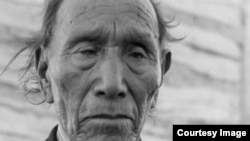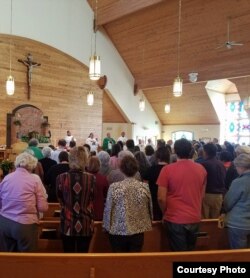Last month, U.S. Catholic bishops voted unanimously to pursue sainthood for Oglala Lakota healer and visionary Nicholas Black Elk, who is credited with bringing hundreds of Native Americans to the Catholic faith. It is the realization of a dream for Catholic Lakota on South Dakota’s Pine Ridge Indian Reservation, among them, some of Black Elk’s descendants.
But not everyone one supports the move, mindful of the Church’s role in the historic suppression of indigenous cultures.
Background
Most of what is known about Black Elk is derived from an autobiography dictated to writer John Neihart in 1932, “Black Elk Speaks.”
He was born in present-day Wyoming in December, 1863, according to the Lakota calendar, and given the name of Hehaka Sapa, literally, “Black Elk.”
Black Elk grew up during the period of American settler expansion into the West and the U.S. government’s forced removal of Native Americans onto reservations. During this time, missionaries from various Christian denominations flocked to reservations in order to “save” Native souls. Catholic priests of the Jesuit order — called “black robes” by Lakota — established a mission at Pine Ridge.
Black Elk’s childhood was punctuated by religious visions which led him to later serve as a wichasha wakan, a traditional healer and spiritual leader. Black Elk announced his vocation in 1881, but after the U.S. government banned many Native American religious practices, he was forced to go underground.
“The Jesuits could tolerate Lakota spirituality and practice, but they did not like the healing ceremonies,” said Damian M. Costello, author of Black Elk: Colonialism and Lakota Catholicism. “They saw them as calling in spirits in an inappropriate way.”
In 1904, Costello explained, a Jesuit priest angrily interrupted Black Elk while he was performing a healing ceremony.
“In the aftermath of that, Black Elk was invited to Holy Rosary Mission, and he stayed there, learned about the faith and was eventually baptized," he said.
Black Elk took the Christian name of Nicholas, after the 4th century healer, St. Nicholas. For the next 40 years, he served as a Church catechist, or lay cleric, and is said to have brought more than 400 Native Americans to the Catholic faith.
The road to sainthood
The movement to have him declared a saint began in March 2016, when some of Black Elk’s descendants presented a formal petition to Rapid City, South Dakota, Bishop Robert D. Gruss.
Gruss formally opened the case for sainthood on October 21 during a Mass at Pine Ridge’s Holy Rosary Church.
“Our task now is to continue to gather more information, testimony about his life, and to pray that he is found worthy to have his cause moved forward,” Gruss said.
The canonization process involves three steps: First is the declaration of a person’s heroic virtues, after which the church declares the person “venerable.” Second is beatification, after which the person is called “blessed.” Third is canonization, sainthood.
Petitioners must show evidence of two miracles occurring before and after beautification.
Bill White, a Lakota Catholic, will serve as the postulator for Black Elk’s cause. His job is to gather evidence to present to Rome.
“I believe God spoke to Black Elk at a very early age, and it isn’t likely that this was a message that just came from his village,” White said. “The message that we must all live in peace and harmony, it was such a Christian concept that it had to have come from God Himself, and it actually informed him and gave him direction for the rest of his life.”
Debating conversion
The nature of Black Elk’s conversion, however, is still debated by some scholars: Did the traditional healer become a Catholic out of true conviction or did he simply give in to pressure?
His great-granddaughter, Lakota activist Charlotte Black Elk, has been critical of the Church.
“There are varying types of genocide,” she told C-Span in a 2001 interview. “There’s the genocide where you outright kill people. There’s the genocide where you deny them identity through religious expression, through theology.”
She believes Black Elk converted because it was politically expedient.
“In those days, we weren’t allowed to travel without permission,” she told VOA. “But as a catechist, Black Elk could go everywhere and conduct traditional ceremonies.”
She said she does not support the idea of the Catholic Church claiming her ancestor as a saint, “but I do respect those who do,” she said. “And I will live well together with all my relatives.”
White is aware that not everyone supports the cause, but rejects their criticism.
“For over four decades, he was a catechist. He brought in hundreds of converts. Is this something you do just for a meal ticket, just to be able to travel freely?"
That said, he issued an invitation to skeptics: “I would invite them to give me some evidence. In my job as postulator, I would want to hear evidence to the contrary of what I feel and what I believe.”
The final decision will lie in the hands of Pope Francis, who has been vocal in his support of indigenous rights.
If confirmed, Black Elk would be the second Native American to receive the Church’s highest honor. The first was Kateri Tekakwitha, a 17th century Mohawk, canonized by Pope Benedict XVI in 2012.












